We have all seen the great potential of AI, but many businesses struggle to apply it effectively within a business context, often limiting its real value. The promise of AI is vast, yet without the right strategies, its potential remains untapped. Enter Retrieval Augmented Generation (RAG) – a transformative approach that enhances AI models’ capabilities, ensuring their outputs are more accurate, context-aware, and relevant. In this blog post, our Manager in AI, Anders Ramsgaard, will explore what RAG is, how it can benefit organizations, and showcase industry use cases that highlight its transformative power. Let’s dive in and see how RAG can unlock unprecedented business value.
What is RAG?
Retrieval Augmented Generation (RAG) is an architectural approach that combines the precision of retrieval-based systems with the creativity of large language models (LLMs). Traditional generative models, like OpenAI’s GPT, excel at generating text based on learned patterns from large datasets. However, they sometimes lack specific, up-to-date information, especially when dealing with niche or rapidly evolving topics.
RAG addresses this limitation by integrating a retrieval component that searches an internal database within the organization or external knowledge sources for relevant information. This retrieved data is then used to augment the generative model’s output, ensuring that the responses are not only coherent and contextually appropriate but also factually accurate and specific.
To simplify, let's break the process into 4 stages:
- Query Input: A user asks the system a question, such as a customer inquiring if a specific product is available and if there are any recent reviews.
- Retrieval: The model retrieves relevant information from a knowledge base to answer the user’s question. Consider this as making the LLM smarter or more competent within a specific area. For instance, the RAG system searches the company’s database for inventory status and recent customer reviews.
- Augmentation: The retrieved information is then used to provide context and augment the original query. This prompt is designed to generate the most accurate and relevant answer by providing the model with context-specific information.
- Generation: A generative model, such as GPT, processes the augmented query to produce a response. In our case example, the response would include the current inventory status of the product and the latest review.

What are the advantages of RAG?
The RAG approach has a number of key benefits:
- Enhanced Accuracy and Relevance:
– Traditional generative models, while powerful, can sometimes produce responses that are plausible but not necessarily accurate. By incorporating a retrieval step, RAG ensures that the responses are grounded in actual data, enhancing their factual accuracy and relevance.
- Improved Contextual Understanding:
– RAG can better understand and utilize the context provided by the retrieved documents. This leads to more nuanced and contextually appropriate responses, improving decision-making processes and operational efficiency.
- Scalability and Efficiency:
– The retrieval component can quickly narrow down vast amounts of information to the most relevant pieces, significantly reducing the computational load on the generative model. This makes RAG not only faster but also more scalable and capable of handling large-scale queries efficiently.
- Cost-Effective Implementation:
– Traditional AI models require extensive retraining to incorporate new information, which is both time-consuming and costly. RAG mitigates this by allowing models to access and utilize external data sources directly. This not only reduces the need for frequent retraining but also makes the implementation of domain-specific AI applications more affordable and efficient.
- Versatility in Applications:
– RAG is highly versatile and can be applied across various domains, from customer support and knowledge management to content creation and data analysis. Its ability to generate precise and contextually relevant content makes it invaluable for any application that relies on accurate information dissemination.
Industry Use Cases
At Intellishore, we are committed to leveraging cutting-edge technologies to deliver exceptional value to our customers. By integrating RAG into our AI frameworks, we can offer more precise, reliable, and contextually relevant responses across various applications and industries:
Pharmaceutical
– RAG can be used to enhance regulatory compliance and reporting processes in the pharmaceutical industry. By retrieving and analyzing regulatory guidelines, historical compliance reports, and internal documentation, the model can generate comprehensive compliance reports and ensure adherence to regulatory standards. This helps pharmaceutical companies stay updated with changing regulations, avoid legal issues, and streamline the process of submitting accurate and thorough reports to regulatory bodies.

Retail
– In the retail industry, RAG can significantly enhance customer support and engagement. By retrieving relevant information from a retailer’s knowledge base, product manuals, previous customer interactions, and FAQs, the model can generate accurate and contextually appropriate responses to customer inquiries. This enables customer support teams to handle queries more efficiently, resolve issues faster, and provide a higher level of service. Additionally, the model can help in personalizing customer interactions by referencing past purchases and preferences, leading to improved customer satisfaction and loyalty.

Legal
– Lawyers and legal researchers can leverage RAG to efficiently analyze and interpret legal documents, case laws, and statutes. The model can retrieve relevant precedents and generate summaries or insights, significantly reducing the time required for legal research and enhancing the accuracy of legal advice.

New Possibilities with RAG
New Possibilities with RAG
Retrieval-Augmented Generation represents a significant advancement in the field of artificial intelligence, offering a powerful solution to the limitations of traditional generative models. By combining the generative capabilities of large language models (LLMs) with robust information retrieval systems, RAG offers unparalleled benefits in terms of accuracy, cost-efficiency, and user trust. Additionally, it broadens the scope of applications across various industries.
RAG has the potential to revolutionize business operations, from improving customer support through more precise and context-aware responses to driving data-driven decision-making with real-time information retrieval. It unlocks unprecedented value by enabling businesses to leverage vast amounts of internal data in a more intelligent and effective manner. This, in turn, leads to increased operational efficiency, better customer experiences, and, ultimately, a significant competitive edge.
As organizations continue to adopt and integrate RAG into their AI strategies, we can expect to see a new wave of innovation and productivity. Embracing this technology is not just a step forward in AI adoption but a leap toward a future where data-driven intelligence is at the core of every successful business strategy. At Intellishore, we are excited to bring the power of RAG to our customers, helping you achieve your business goals with cutting-edge AI capabilities.
Are you curious about how RAG can transform your organization? Feel free to reach out to me or any of my colleagues at Intellishore to explore how we can tailor our AI solutions to meet your unique business needs.
Anders Ramsgaard, Manager, AI at Intellishore

And don't worry, we will not use your information to spam you with buzz-filled articles on AI.
We look forward to hearing from you.
